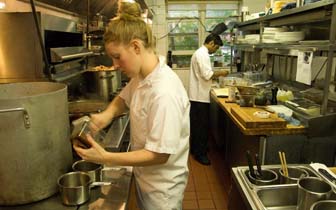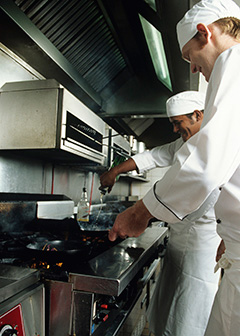Summary
Please enable javascript to play this video.
| Quick Facts: Cooks | |
|---|---|
|
$35,760 per year
$17.19 per hour |
|
| See How to Become One | |
| See How to Become One | |
| See How to Become One | |
| 2,805,100 | |
| 5% (Faster than average) | |
| 130,600 | |
What Cooks Do
Cooks season and prepare foods, including soups, salads, entrees, and desserts.
Work Environment
Cooks work in restaurants, schools, hospitals, private households, and other places where food is prepared and served. Their work hours may include early mornings, late evenings, holidays, and weekends. Most cooks work full time, although part-time work is common.
How to Become a Cook
Cooks typically learn their skills through on-the-job training and related work experience. Although no formal education is required, some cooks attend culinary school.
Pay
The median hourly wage for cooks was $17.19 in May 2024.
Job Outlook
Overall employment of cooks is projected to grow 5 percent from 2024 to 2034, faster than the average for all occupations.
About 432,200 openings for cooks are projected each year, on average, over the decade. Many of those openings are expected to result from the need to replace workers who transfer to different occupations or exit the labor force, such as to retire.
State & Area Data
Explore resources for employment and wages by state and area for cooks.
Similar Occupations
Compare the job duties, education, job growth, and pay of cooks with similar occupations.
More Information, Including Links to O*NET
Learn more about cooks by visiting additional resources, including O*NET, a source on key characteristics of workers and occupations.
 United States Department of Labor
United States Department of Labor







